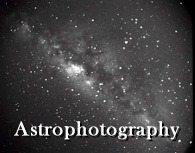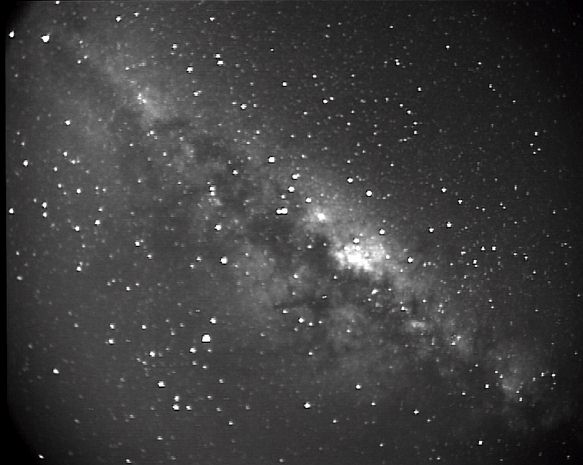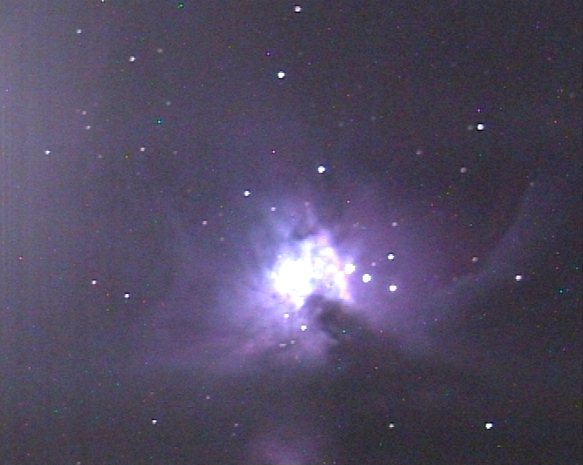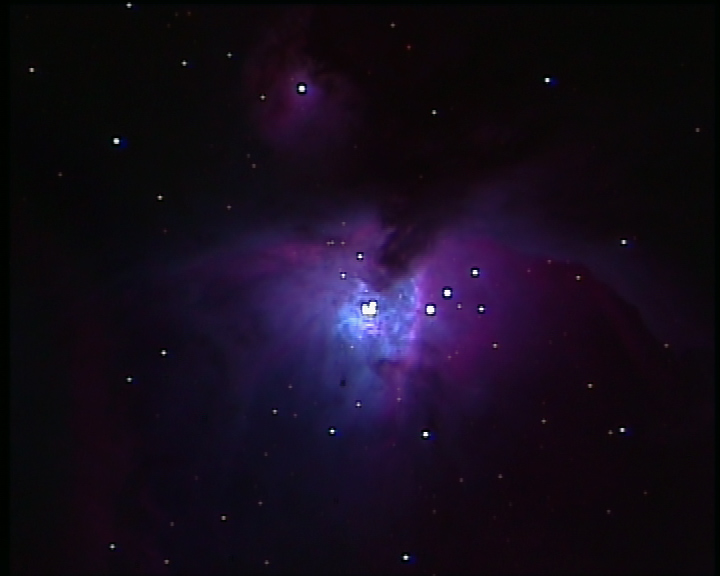Viva La Revolution
There's a revolution occurring in astronomy. Visual astronomy is merging or at
least blurring with what was until recently photographic astronomy.
The revolution started when CCD cameras became available to the public at low cost.
These have combined with powerful easy-to-use computer software to deliver real
power into the hands of amateur astronomers. |

|
|
In my opinion it's just a matter of time before most, if not all eyepieces, will be
opto-electronic instead of the traditional purely optical variety. There will still
be glass in the system, of course, but the glass will be there acting as a lens to a
camera. Many folks lately are getting this same idea.
Being relatively new to this astronomy game I don't bring any nostalgia for glass and
visual astronomy. Instead, I find that I am most interested in acquiring bright
detailed images that I can see live on my TV.
I'm not very interested in peering into an optical eyepiece, trying to use averted
vision, trying to build-up a mental, and necessarily black and white, impression of the
same thing.
The view that I got when I first pointed my Mintron security video camera to the sky
was astounding. There is absolutely no way that a traditional optical telescope
could have delivered that view. No telescope has a field of view wide enough,
and until the last couple of years no video camera (that I could afford) was sensitive
enough.
The image below is pretty close to what I saw that freezing night last winter, when I
first fitted the tiny little f/1.4 wide-angle CCTV lens to the Mintron camera and set it
to point straight up. The heart of a galaxy, albeit our own galaxy, the Milky Way,
was right there lighting up my TV. The rough as guts picture below doesn't do
justice to the impression that the television image made, but for an ordinary Joe it was
exciting to see.

So, now I've given up watching Frasier, Sienfeld or other TV shows. Instead, I
now watch stuff live on the TV or take pictures of stuff that, until recently, the common
man has never had any hope of seeing.
Mintron, the camera manufacturer specialise in low-cost but highly sensitive security
cameras. These are the cameras you will see out the back of buildings or factories
in dark alley ways. Mintron says that the 13V1C B&W camera is sensitive enough
to display a scene illuminated only by star light (0.0004 lux). Shots I've taken of
the garden and the house indicate that is about right. I was so impressed with its
capability I recently (2006) bought the color version (the Mintron 62V1P-Ex) which is
equipped with the highly sensitive half-inch Ex-View CCD chip.
Generally color cameras are about one-third as sensitive as B&W ones (because the
light has to be split three ways into Red Green & Blue). This camera is a
few dollars ($US 40) more but it has about the same sensitivity as my B&W version and
it has a slightly wider field of view. The cost of the color camera was a paltry
$US 250.
By attaching the camera to my 8" telescope I can now see the Orion nebula looking
like this live on TV:

So what? You may think this image is a bit noisy and fuzzy and only slightly
brighter than what you'd get visually, but you'd be missing the point. The image is
being acquired in color. Our eyes can't see color in the low light levels that you
get from through the eyepiece of even a large telescope, but the camera can.
The technology is still in its infancy . Remember this camera cost me just
$US 250. What view would a high-end camera give you? Remember electronics and
computers are improving in line with Moore's Law (doubling in power every few
years). It will only be a few years when this camera will be superseded by a
cheaper one that is ten times more sensitive and with little or no noise. Then the
image on the TV will look something like this:
The above image was created using the 62V1P-Ex color Mintron camera at prime-focus of
an 8" telescope. It is the result of capturing just 50 video frames in
Astrovideo computer software, subtracting a dark frame to eliminate noise and then
"amplifying" the image in software like Maxim DSLR. It took a long time
for me to ask around and find out how to do it, but to create an image like this now only
takes me about 30 mins at the telescope to capture the data and then another 30 mins on
the computer to process it. Not bad huh for a small effort? Not saying its
perfect I'm just a beginner. I've got the color balance wrong and the stars have
dark halos, and I don't know how to do a composite in the core - it's not important.
It won't be long and you won't have to process the data at all - it will just feed
straight from your camera and via your computer to your monitor - with no manual procesing
involved.
When I was a kid and was looking at those astronomy pictures in books it was only the
pro astronomers who could have produced an image showing the detail of the clouds in M42
like my one that I snared from my suburban back yard.
It is just a question of a few years and amateur astronomers will all be viewing on TV
(probably on computer actually) live video of the Orion nebula or other colorful deep sky
objects. In future our kids will be looking at views, much better than this, live on
TV courtesy of the new generation department store scope they bought.
As you've seen we're almost there, but not quite yet. It's just a matter of time,
when the hardware is cheap enough.
Click here to see my astrophotographs
Click to Join the Revolution
|

